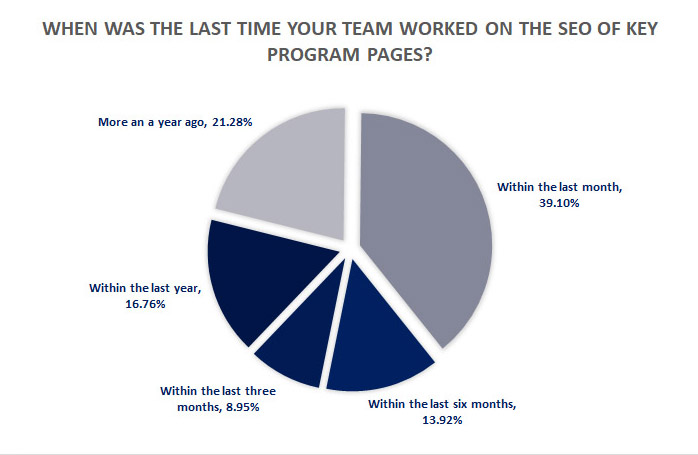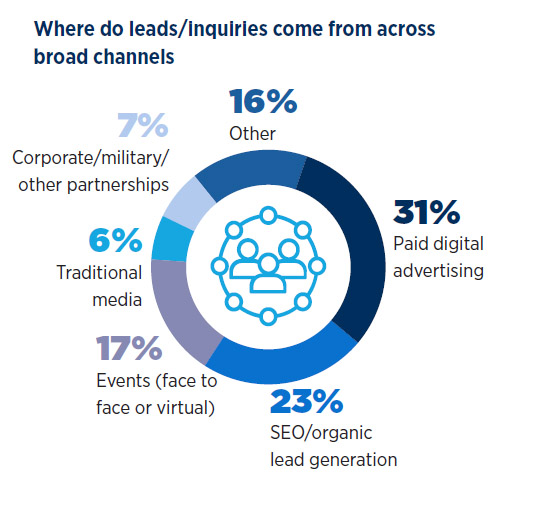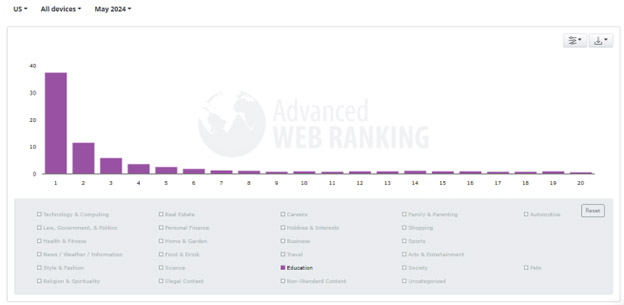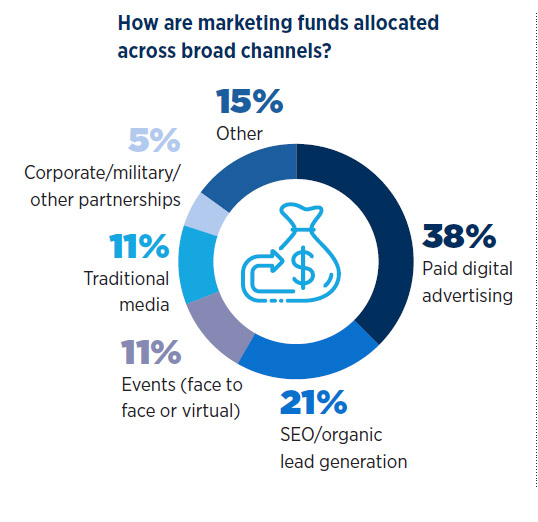enrollment
Leveraging SEO in Your Enrollment Growth Strategy
Search engine optimization (SEO) is an essential element of any institution’s lead generation strategy and is a core tactic that should be at the center of your digital marketing strategy. Why?
- Your competition is investing in SEO.
- SEO delivers high-quality and high-propensity leads—great for top-of-funnel growth.
- Your web ranking improves when you add value to the web, increasing your visibility—Google matters.
- SEO is a low-investment, high-ROI marketing strategy, but it does require time and regular attention.
- Almost all prospective (graduate and online) students begin their search on a search engine.
Let’s talk about each of these points in some detail.
1. Your competition is investing in SEO
In a recent poll of higher education professionals, 39 percent said they worked on SEO within the last month, meaning your competition is working to improve their visibility and web ranking. This demonstrates that SEO is a core recruitment strategy in higher education, and one that is being regularly attended to.

These data imply that many institutions are actively recognizing that SEO is critical to building awareness, being visible, and being successful in today’s market. Higher education is an increasingly competitive marketplace for each prospect that could be a future enrolled student at your institution. Therefore, as your competition works on their SEO tactics and strategies while you choose not to, the market share gap between you and them will continue to grow. Should you choose to work on SEO, you can circumvent that and see significant gains. This demonstrates that SEO is a core recruitment strategy in higher education, and one that is being regularly attended to so prospective students can find you.
2. SEO delivers high-quality and high-propensity leads—great for top-of-funnel growth
RNL’s most recent survey of graduate marketers indicates that among all lead generation sources, nearly 60 percent of all the lead volume in the enrollment funnel comes from a combination of two sources: organic lead generation and paid digital lead generation (DLG) which includes paid advertising on search engines. Our 2022 research among online program marketers indicates even higher proportions of leads coming from these two sources.

While these two strategies generate the greatest numbers of leads, recent RNL research also indicates that organic search traffic converts at 3x any other lead generation source. Therefore, if you are attending to your SEO continuously, the reliance on paid digital advertising—and the costs of ad spend—lessens. SEO and DLG are marketing tactics that complement one another. If you are investing in both organic and paid, which most are, that will further benefit your web ranking, improving cost per conversion.
3. Your web ranking improves when you add value to the web, increasing your visibility
Google matters! Google remains the gold standard of search engines, driving more than 90 percent of search market share to websites. Therefore, you need to monitor and consider what Google rewards on the web (for organic and paid searches). What Google ranks highly and what it rewards are of vital importance to your success. This is so important that RNL has a whole team of people who are tasked with monitoring changes and adjusting strategies accordingly for our clients.
Currently, Google rewards websites with regularly updated content, technical components, and pages about 2 to 2½ layers deep (this is a change from a past focus on first-layer pages). Creating user-friendly content that adds value to the web is critical, with the right page density ratio, keywords, and technical tactics like backlinking to improve your web ranking.
Talk with our digital and enrollment experts
We’re to help you find the right digital marketing and recruitment strategies. Let’s set up a time to talk.
4. SEO is a low-investment, high-ROI marketing strategy, but it does require time and regular attention
When SEO is managed correctly over time, it can produce 50 percent (or more) of your leads, lessening (not eliminating) your reliance on DLG. You are highly rewarded when your pages appear in the coveted position one, on page one, for organic listings. In fact, being in position one, page one delivers an unparallelled click through rate (CTR) of more than 35 percent to your site . After position one, there is a steep drop to only 11 percent CTR in position two, and in position three and beyond, CTRs are in the single digits.
Do you have the resources to tend to your SEO to be in position one?

Source: Google Organic SERP CTR Curve (advancedwebranking.com)
RNL’s most recent survey of graduate education marketers also indicates that about 20 percent of the typical marketing budget is being allocated to SEO/organic lead generation. Whether this is a sufficient investment depends on the total marketing budget, but it should set a comparative threshold in determining your “current state.” Either way, as we state above, institutions investing in SEO are getting the BEST converting leads, and in this competitive higher education landscape, it is critical to your ability to meet—and exceed—your enrollment goals.

5. Almost all prospective (graduate and online) students begin their search on a search engine
RNL’s 2024 survey of online students revealed that more than 90 percent of online students (and similar proportions of graduate students) start their search on a search engine. Additional RNL research indicates that almost 60 percent of traditional undergraduate students use search engines to start their program search. Even more use these same search engines—even if they know the URLs of their schools of interest—to do the research that results in their selection of a program. This is why not having a sound SEO strategy places a school at a severe disadvantage compared to its competitors.
SEO does require the right resources and time to monitor and implement updates to your website pages. We previously discussed SEO Action Planning and using SEO as part of your lead and enrollment growth strategy, which also demonstrates how and why you should prioritize SEO within your marketing plan: A few months ago, I participated in a webinar in which we really dug into what we called “The Overlooked Role of SEO in Enrollment”. In the webinar we reviewed statistics about the huge potential for SEO to drive enrollment and why it should be at the core of your growth strategy. I encourage you to watch this on-demand webinar for additional information.
We are also here to help you. Reach out to set up a time to talk with our digital marketing and enrollment experts, and we can discuss your best options for SEO, DLG, and other key marketing and recruitment strategies.
